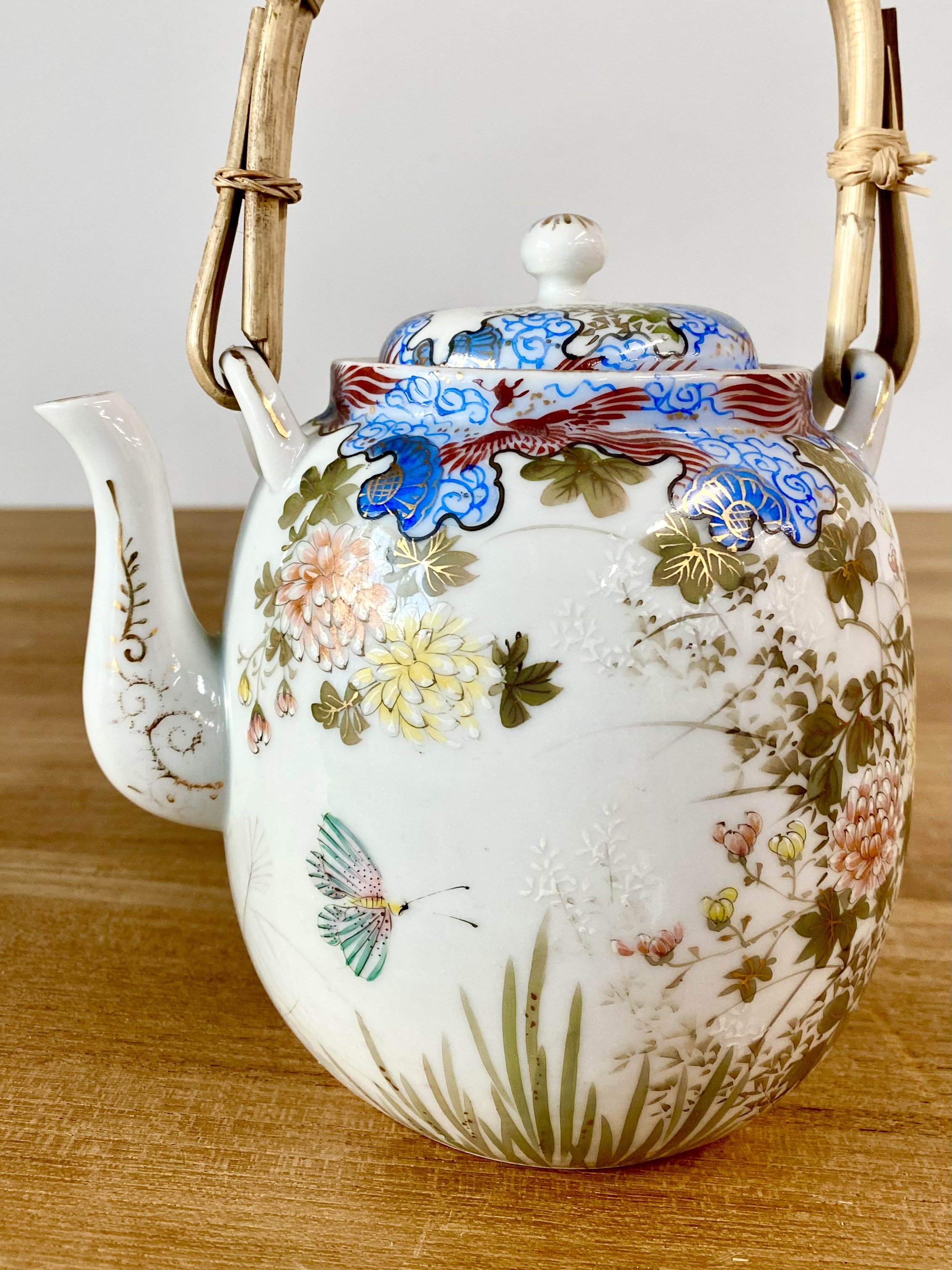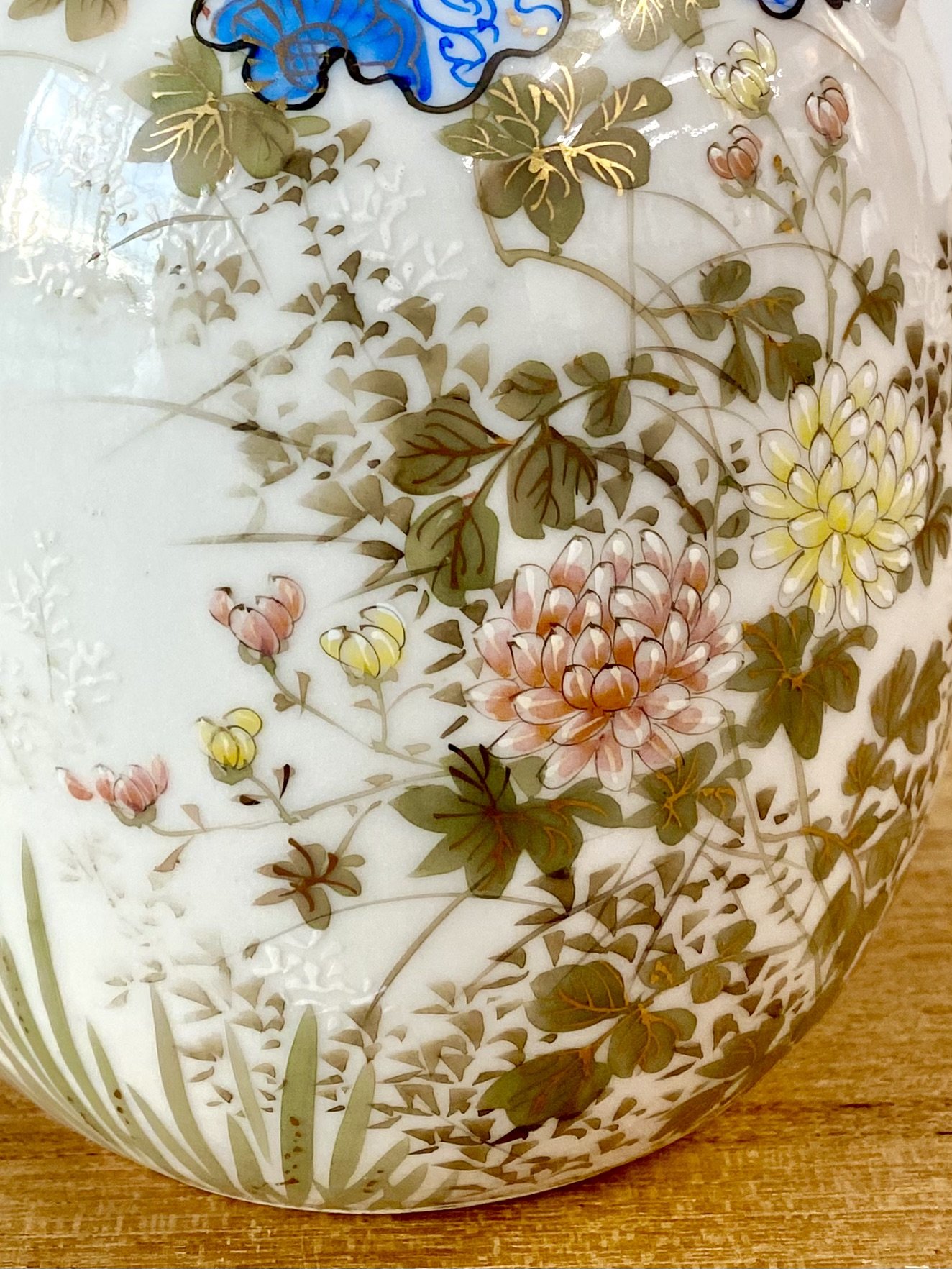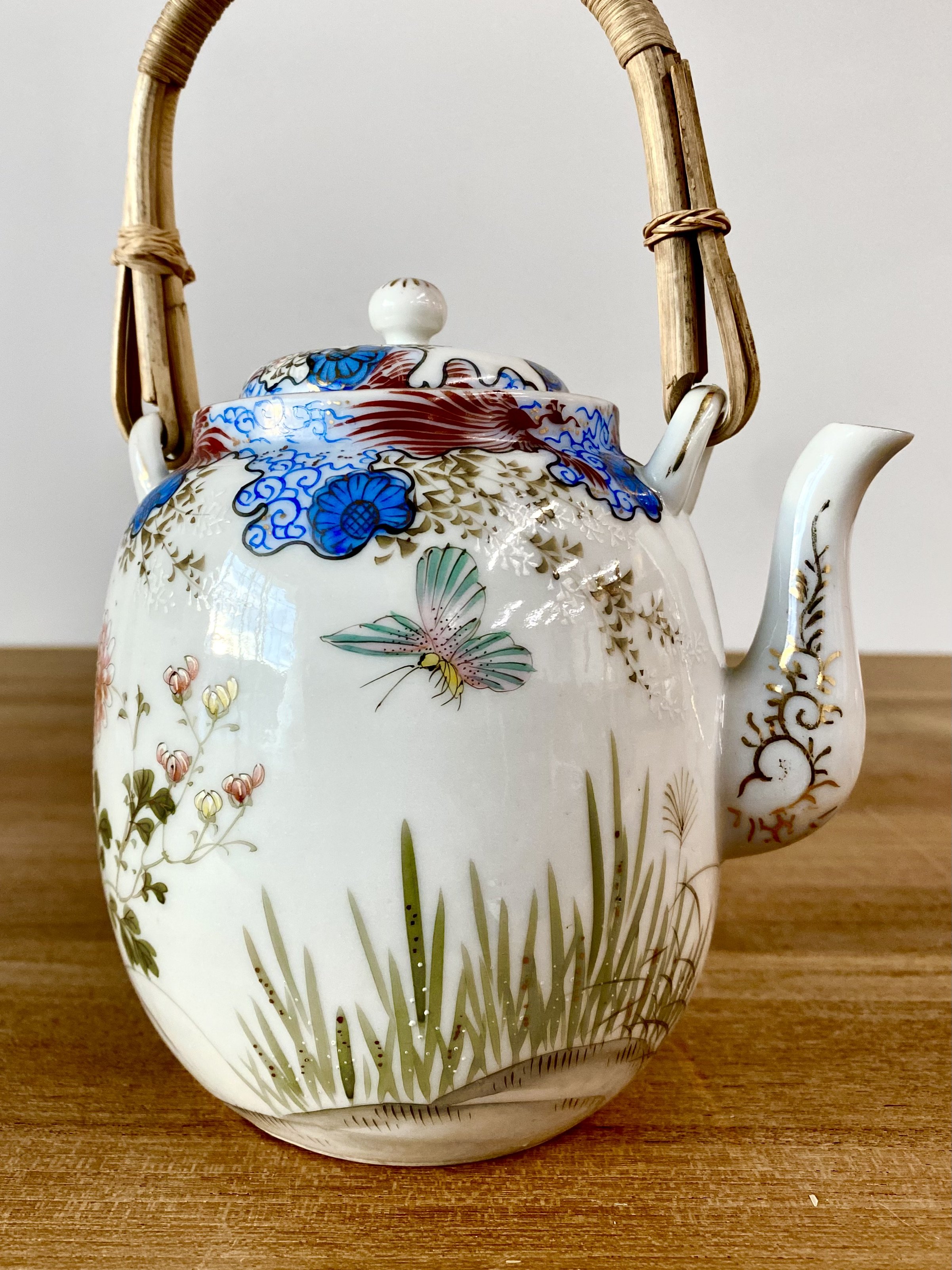 Image 1 of 3
Image 1 of 3

 Image 2 of 3
Image 2 of 3

 Image 3 of 3
Image 3 of 3




Fine Kutani Teapot
Kutani ware teapot, Meiji or Taisho period. Kutani ware (Kutani-yaki, 九谷焼) was first produced in the mid 17th century, after kaolin clays were discovered near what is now Kaga, Ishikawa Province. After a lull in the 18th century, porcelain production was resumed in the early 19th century as "revived" Kutani (Saikō-Kutani, 再興九谷). Revived Kutani ware made its European debut at the 1873 World Exhibition in Vienna (Weltausstellung 1873 Wien). This was just after the Meiji Restoration, and the Japanese government was keen to share Japanese art and culture with the wider world. This is an example of that historical moment.
Kutani ware teapot, Meiji or Taisho period. Kutani ware (Kutani-yaki, 九谷焼) was first produced in the mid 17th century, after kaolin clays were discovered near what is now Kaga, Ishikawa Province. After a lull in the 18th century, porcelain production was resumed in the early 19th century as "revived" Kutani (Saikō-Kutani, 再興九谷). Revived Kutani ware made its European debut at the 1873 World Exhibition in Vienna (Weltausstellung 1873 Wien). This was just after the Meiji Restoration, and the Japanese government was keen to share Japanese art and culture with the wider world. This is an example of that historical moment.
Kutani ware teapot, Meiji or Taisho period. Kutani ware (Kutani-yaki, 九谷焼) was first produced in the mid 17th century, after kaolin clays were discovered near what is now Kaga, Ishikawa Province. After a lull in the 18th century, porcelain production was resumed in the early 19th century as "revived" Kutani (Saikō-Kutani, 再興九谷). Revived Kutani ware made its European debut at the 1873 World Exhibition in Vienna (Weltausstellung 1873 Wien). This was just after the Meiji Restoration, and the Japanese government was keen to share Japanese art and culture with the wider world. This is an example of that historical moment.